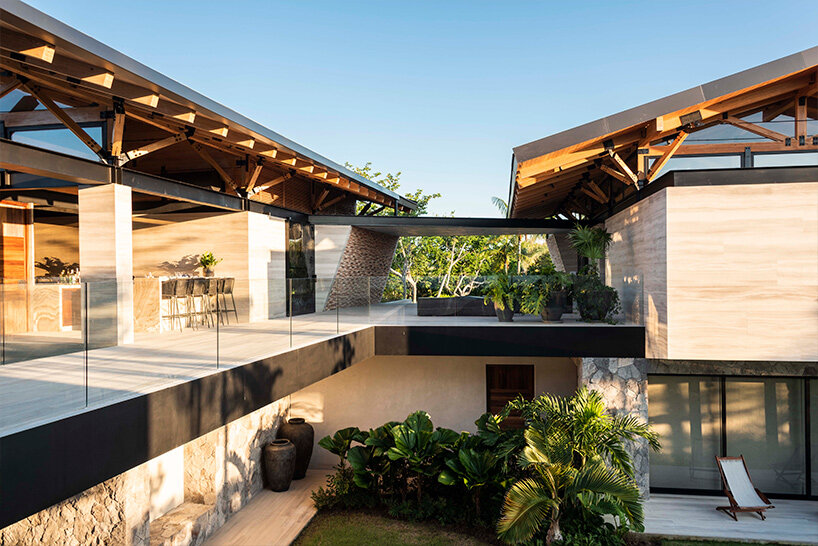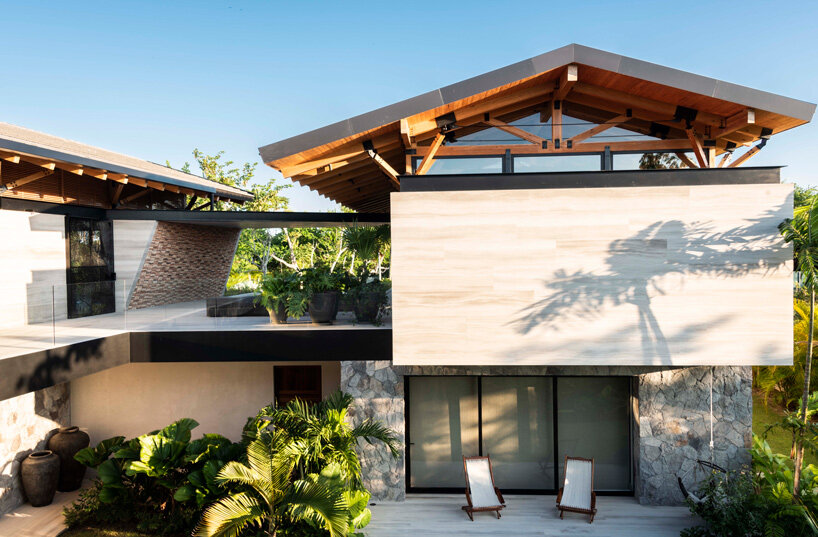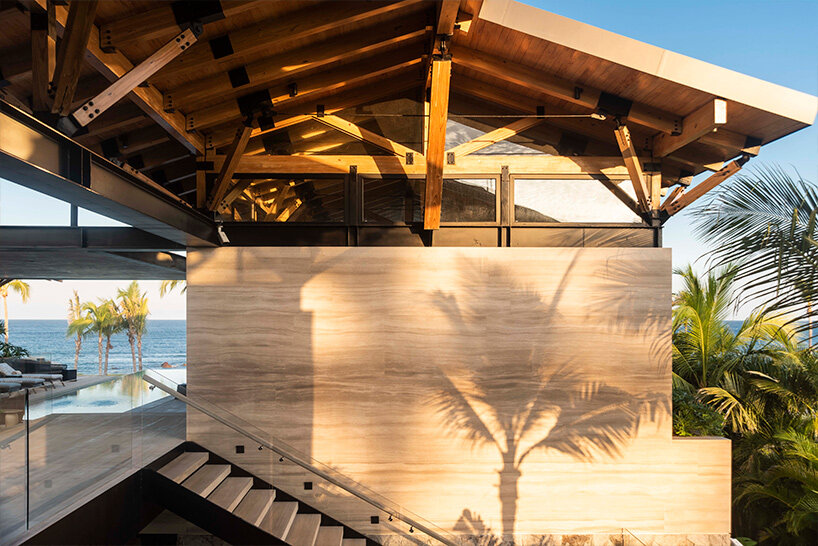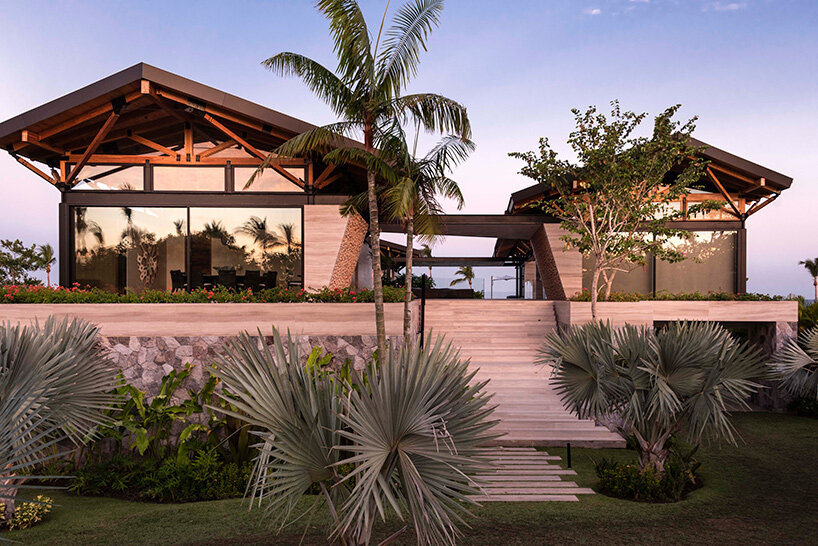multi-generational house in mexico blends Luxury Living with Nature
Casa Riviera Nayarit designed by the studio Legorreta & Alonso is a luxury multi-generational residential project. The house is situated in the Riviera Nayarit, a rapidly growing tourist destination in Mexico known for its pristine coastline, lush jungles, sandy beaches, and upscale resorts. Informed by its serene surroundings, the design was crafted to harmonize with the natural setting, covering an area of about 3,700 square meters within a countryside residential complex that includes a golf course and a private beach, offering an escape from urban life.
The architectural concept drew inspiration from the aesthetics of yachts, incorporating elements of aerodynamics, circulation, and visual appeal found in luxury boats into the residence’s design. This approach aimed to establish a harmonious connection between the architecture and its environment, creating a sense of luxury and movement in the overall design.
image by Michael Calderwood
Casa Riviera Nayarit: The Illusion of Floating Volumes
Legorreta & Alonso’s project features a contemporary architectural style characterized by two parallel volumes connected by a central hallway. This layout was designed to provide similar views from interior spaces on both levels. The hallway serves as the main entrance on the upper level, linking the west entrance to the east side of the house and offering a captivating sea view upon entry.
The architectural plan was tailored to accommodate the needs of a family comprising 16 members spanning three generations. The house is divided into two main areas: the upper floor for public spaces and the lower floor for private use. The aim was to create a peaceful residence that catered to the diverse needs of the family members while ensuring a strong connection to the natural surroundings. Each family member’s input was essential in crafting personalized and functional living spaces that aligned with their lifestyle.
the scheme sees two parallel volumes connected by a central hallway
inside casa Riviera Nayarit
The coverings of the volumes introduce a sense of lightness and visual contrast against the otherwise monolithic base structures, creating the illusion of floating. These coverings are constructed using laminated pine wood and steel structures in a ‘spider’ form, exuding a modern aesthetic that contrasts with the rest of the architectural design.
The interior design was integrated into the architectural project, considering the initial inspirations of the architectural team. Elements such as art, furniture, specialized woodwork, textiles, and decor were thoughtfully selected by Uribe Krayer to maintain a conceptual connection with the architecture. This approach aimed to capture the essence of natural elements like waves, winds, light, and shadows, creating a harmonious environment for relaxation and family bonding while fostering a strong connection with the surroundings.
the roof structures and facade shutters were constructed using laminated pine wood
Regarding the exterior materials, a palette of light tones was selected to complement the lush green surroundings and the azure hues of the nearby sea. At the house’s main entrance, two slanted walls adorned with warm-toned Spanish tiles were incorporated, arranged vertically to create a column-like pattern. White Wood marble was employed for both the upper-level facade walls and floors, providing a consistent aesthetic and durability.
For the walls of the lower-level volumes, natural and locally-sourced stone in neutral shades was utilized to enhance the project’s connection to the site. Laminated pine wood was used for the roof structures and facade shutters, adding a natural touch. Semigloss black-finished steel was integrated into the roof and mezzanine slab structures.
the volume coverings bring a feeling of lightness and visual contrast to the solid base structures, giving the illusion of floating
Art played a significant role in enhancing the project’s spaces, with curated artworks by Uribe Krayer that include pieces by renowned artists like Jan Hendrix, Charabati Bizzarri, and Fernando Pacheco. These artworks, mostly sculptural in nature, were placed in various rooms to establish a thematic connection with yachts, whether through their sense of movement, aerodynamics, maritime inspiration, or the interplay of light and shadows reminiscent of water.
In terms of furniture, a combination of Mexican designer pieces and custom-made items crafted in collaboration with artisans was chosen. Uribe Krayer designed specific woodwork and furniture, utilizing natural materials such as parota, marble, and ceramic. Outdoor furniture features an abundance of cushions to maximize comfort in the spacious seating areas. Textile selections prioritized durability and aesthetics, with special fabrics chosen to withstand the local climate’s challenging conditions.
Credit: Source link



